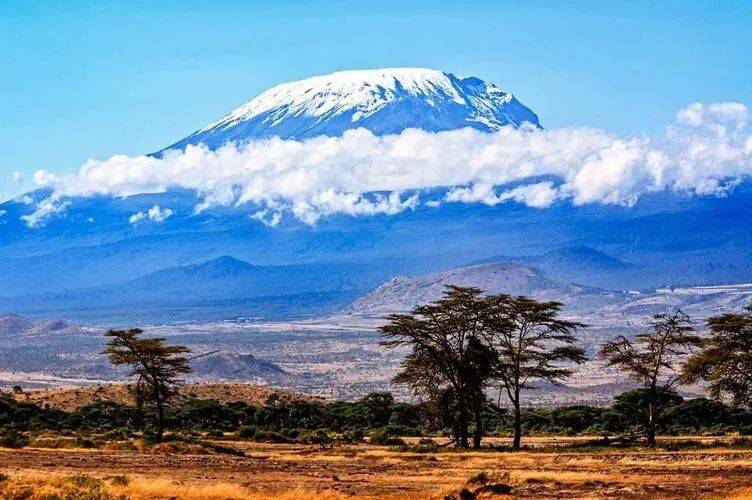Where is coffee mainly grown in Tanzania? What are the characteristics of Tanzanian coffee?
In eastern Africa, it is the highest in Africa, most of which is more than 1000 meters above sea level and is run through the well-known East African Rift Valley, which also brings many volcanoes, lava plateaus and lakes. Therefore, there are many countries in East Africa that mainly produce and export coffee, such as Ethiopia, Kenya, Tanzania and Rwanda.
Although Tanzania is not as well-known as Ethiopia and Kenya, Tanzania is also rich in natural resources and produces high-quality coffee, making it one of the three giants of African coffee. Tanzania is one of the birthplaces of ancient mankind, the country's economy is mainly agriculture, rich in mineral and tourism resources. The terrain is high in the northwest and low in the southeast, the eastern coast is a lowland, and the western plateau accounts for half of the total area of the country, showing a trapezoid as a whole.
The East African Rift Valley divides east and west from Lake Malawi to the north and south, bringing Tanzania Mount Kilimanjaro, Africa's highest peak. Tanzania is close to the equator and its climate is mainly tropical. The eastern coast and inland lowlands of Tanzania have a savanna climate, and the western plateau has a tropical mountain climate, with an annual average temperature of 21 ℃-26 ℃. However, Tanzania has less rainfall, 80% of the area's rainfall is less than 1000 mm, but Tanzania has many rivers and lakes, rich in hydraulic resources, these conditions create a very suitable environment for coffee cultivation.
According to some historical records, coffee was introduced from the island of Reunion, brought by Christians to the Bayamoyo and Mogoro producing areas of Tanzania, and later spread to Mount Kilimanjaro in the north-east, where volcanic ash brought fertile soil, so production began to increase. Later, cultivation continued to spread to other regions, and the first common cooperative Kilimanjaro Native Planters'Association (KNRA) was established, which attracted many farmers to choose to grow coffee, and began to introduce other varieties in neighbouring Burundi and planted in western Tanzania.
In the previous colonial period, the coffee industry in Tanzania has always been dominated by manor planting management. after the independence of Tanzania, in order to promote coffee cultivation, the land was divided into small plots and distributed to small farmers, so now more than 90% are small farmers. And small farmers will form cooperatives, of which the local Kilimanjaro Cooperative Alliance (Kilimanjaro Cooperative Union, referred to as KNCU) is mainly responsible for controlling the quality of coffee produced.
90 per cent of Tanzania's coffee comes from 450000 small farmers and the other 10 per cent from larger estates. At present, nine production areas are divided, which are all around the country, of which the relatively well-known ones are Kilimanjaro, Arusha, Ruvuma, Mbeya, Tarime and Kighoma.
The most important coffee producing area in Tanzania is Kilimanjaro. Located in northeastern Tanzania, Mount Kilimanjaro is the highest mountain on the entire African continent. It is mainly composed of three extinct volcanoes, Kibo Kibo, Mavenz Mawensi and Sheila Shira, with an elevation of up to 5895 meters and a perennial snow top.

Because Mount Kilimanjaro blocks the humid monsoon in the Indian Ocean, Mount Kilimanjaro has three zones of heat, temperature and cold, from the tropical rain forest climate at the foot of the mountain to the ice sheet climate at the top of the mountain, because the mountains are easy to form topographic rain. so it's rich in precipitation. The combination of current and temperature conditions make Kilimanjaro form many different vegetation belts from top to bottom, and coffee is grown at an altitude of 1050-2500 meters.
In the southern foothills of Kilimanjaro is the regional capital city of Moshi, which is also the largest coffee trade and processing center in Tanzania, mainly responsible for coffee processing and export in the region. The front street coffee also includes Kilimanjaro beans in the well-known producing area of Tanzania, using Typica, which is washed and brewed with soft acidity, citrus, berry, honey and nutty flavors, soft tea taste and overall balance. Qianjie Coffee believes that although Tanzania is located in Africa, adjacent to Kenya, Rwanda and other countries, Tanzanian coffee has less bright acidity, softer acidity, stronger texture and aroma, more balanced as a whole, and has the unique characteristics of Tanzania.

For more information about coffee producing areas, please scan the code directly and follow: coffee comments.
Long press the QR code to follow:
Important Notice :
前街咖啡 FrontStreet Coffee has moved to new addredd:
FrontStreet Coffee Address: 315,Donghua East Road,GuangZhou
Tel:020 38364473
- Prev

Name it Luoyang Hot Soup! Luoyang people: I don't dare to drink!
▲ Click to pay attention| Daily Boutique Coffee Culture Magazine Coffee Workshop Recently, Dahe Daily reported that a local coffee shop in Luoyang had launched a coffee called "Luoyang Hu Spicy Soup", attracting many netizens who like freshness to check in and try it. It is understood that this Hu La Tang coffee is mixed with coffee concentrate and Dukang.
- Next

Ethiopia's coffee exports will lose nearly 1.4 billion yuan!
According to media reports, another serious security incident occurred in the Horo Guduru area of Kiremu district in Olomiya, Ethiopia. In this incident, at least six people were killed. The location of this conflict is located
Related
- Can artificial hand brewing replace the barista's real hand brewing coffee? What is the difference between making coffee with fake hands and making coffee with real hands?
- Can't sell it?! Coca-Cola gives up selling Costa!
- The brewing parameters of the world's top rose summer coffee, ratio, water temperature, grinding and sharing! Graphic teaching on Emerald Manor Rose Summer Brewing Method!
- Jasmine milk tea, a new cup of ice?! Netizen: Why don't you just sell ice cubes
- Is it necessary to buy a cloth powder for an espresso machine? Why should we evenly distribute the powder when extracting espresso?
- What is the grinding ratio, water temperature and powder amount needed to make Combo in Mocha pot coffee? Mocha pot is suitable for making coffee deep and light baked beans??
- Caught off guard! Starbucks '15-year-old store quietly closes!
- Naixue Drink drank a stone and claimed a claim was retaliated by the merchant?!
- What is the difference between a cake filter cup and a V60 conical filter cup? What are the advantages and disadvantages of the flat-bottomed filter cup brewing solution?
- What is the difference between fine coffee powder and medium coarse coffee powder? Do I need to sift out the fine coffee powder for making coffee by hand?

